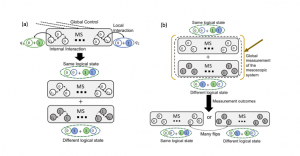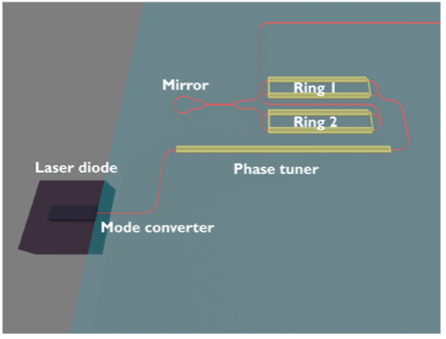Summary
Mesoscopic systems provide a new tool for quantum systems design. In particular, they are enabling of robust quantum control. Here “mesoscopic system” refers to a connected network where each element, if studied alone, would be a quantum bit. The network is too big to be treated fully quantum mechanically. We do not have individual control over each element and we measure collective properties of the network. However, the network retains quantum coherence and behaves in a uniquely quantum fashion. In this project, we design a novel protocol using an intermediate mesoscopic system to control and interconnect non-interacting qubits. Our method aims to create entanglement between two separated qubits; a pure quantum correlation between the target qubits that provides a measure of the mesoscopic system’s quantum capacity. Over the course of this project, we will develop new theory and experimental tools. Ultimately, we expect our work will lead to innovative design elements for use in quantum processor architectures and quantum measurement devices.

Figure 1: The summary of the entangling protocol: (a) The experimentally available control tools are used to correlate two joint logical states of the target with two very distinct collective states of the mesoscopic system, (b) A low-resolution global measurement over the mesoscopic system discerns between the distinct collective states of the mesoscopic system. This measurement updates the state of the qubits into one of the two logical joint states, each with a probability of ½, along with the state of the mesoscopic system. Both of these joint logical states are maximally entangled quantum states between the target qubits.
Related Content

Visible wavelength external cavity diode lasers in photonic integrated circuits for atomic technologies
Atoms can be controlled by manipulating their internal states using agile, quiet and reliable laser sources. An external-cavity diode laser (ECDL) is a crucial enabling technology to realize such laser sources since it allows for the narrowing of the linewidth of a laser diode and precise tuning of the laser frequency. This project aims to […]
April 19, 2023

Hybrid Quantum Materials towards Topological Quantum Computing
Summary Proximity engineered hybrid materials have shown promise for topological quantum information processing. This form of quantum computing provides a stable, error-tolerant approach for building scalable quantum information processors. Topological quantum computing relies on braiding non-Abelian particles, such as Majorana fermions, which do not exist in nature. One can however use materials engineering to […]
December 8, 2018

A Reformulation of Quantum Game Theory
Summary Classical game theory – conducted at the interface between economics and computer science – has found applications in topics ranging from networking and security to online markets. Despite over 20 years of research into connections between game theory and quantum information, we have yet to see any significant implications of quantum information when applied […]
April 1, 2020
QuantumIon: an open-access quantum computing platform
Summary Trapped ions are one of the most advanced technologies for quantum computing, offering multi-qubit control in a universal quantum computing architecture and the ability to perform calculations with unprecedented precision. In this project we construct a shared trapped-ion quantum computing platform, QuantumIon, that will enable a broader and interdisciplinary scientific community to access an […]
September 9, 2019

